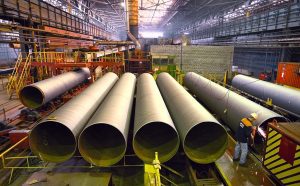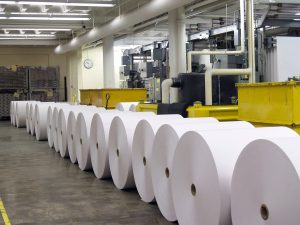
PJSC Azot (Cherkasy), part of Dmytro Firtash’s Group DF, in January-March 2020 increased production of nitrogen fertilizers by 22% compared to the same period in 2019, to 444,100 tonnes, according to a company press release.
Thus, the production volume of commercial ammonium nitrate amounted to 147,100 tonnes (21%), commercial urea some 168,600 tonnes (23%), urea-ammonia mixture some 126,100 tonnes (22%), and ammonia water to 2,300 tonnes. In addition, 216,300 tonnes of ammonia and 168,900 tonnes of non-concentrated nitric acid were produced.
Since the beginning of this year, all production facilities of Cherkasy Azot have been operating at 100% load. One of the factors contributing to the growth of production was weather conditions that allowed farmers to start field work much earlier, the report said.
“The company continues to work, despite the special conditions during the quarantine period, and fully fulfills all contracts, ensuring uninterrupted supplies of nitrogen fertilizers to agricultural producers,” Group DF’s press service said citing Vitaliy Skliarov, the chairman of the company’s board.
PJSC Cherkasy Azot is one of the largest Ukrainian chemical enterprises. It is engaged in production of mineral nitrogen fertilizers. Since 2011, it has been part of Ostchem Group (the Group DF nitrogen business).

The Ministry of Energy and Environmental Protection of Ukraine has included in the forecast balance of electricity generation in the Integrated Power System (IPS) of Ukraine for 2020 the growth of electricity imports at twice compared to the actual indicator of 2019, to 5.615 billion kWh.
According to the updated balance posted on the ministry’s website, electricity exports are also expected to grow by 30%, to 8.455 billion kWh.
The electricity generation will decrease by 1.2% compared with the actual indicators of 2019, to 152.105 billion kWh. In particular, nuclear power plants expect to reach 80.639 billion kWh of electricity generation (2.9% less compared to 2019), thermal power plants 42.129 billion kWh (6.2% less), combined heat and power plants and cogeneration plants 11.064 billion kWh (1.8% more), all hydroelectric power stations 5.088 billion (22% less), pumped storage plants 1.258 billion kWh (6.6% less), block stations 1.643 billion kWh (7% less), and alternative energy sources 10.284 billion kWh (85.6% more).
Thus, according to forecasts, the share of nuclear power plants of the structure of electricity generation in 2020 will be 53.02% (53.91% at the end of 2019), thermal power plants some 27.7% (29.17%), combined heat and power plants and cogeneration plants some 7.27% (7.06%), hydroelectric power stations some 3.35% (4.24%), pumped storage plants some 0.83% (0.87%), block stations some 1.08% (1.15%), and alternative energy sources some 6.8% (3.6%).
Electricity consumption in the country is expected to reach 147.517 billion kWh in 2020, which is 1.8% less compared to the actual indicators of 2019.
Electricity consumption of pumped storage plants in the pump mode is predicted to be 1.752 billion kWh (1.834 billion kWh in 2019).

The main pipe enterprises of Ukraine in January of this year reduced production of pipes from ferrous metals, according to recent data, by 23.9% compared to the same period last year, to 65,800 tonnes.
The Ukrtruboprom association told Interfax-Ukraine that in January 2020, the enterprises of the association reduced production of pipes by 41.8%, to 40,100 tonnes.
Pipe production at Interpipe Nyzhniodniprovsky Pipe Rolling Plant for the indicated period decreased by 33.9%, to 14,800 tonnes, at Interpipe Novomoskovsk Pipe Plant by 48.2%, to 4,400 tonnes. Interpipe Niko Tube reduced production by 44.5%, to 19,200 tonnes.
Dnipropetrovsk Pipe Plant increased pipe production to 100 tonnes from 1,400 tonnes in January 2019, Centravis by 21.1%, to 1,500 tonnes of stainless pipes.
Trubostal plant retained pipe production at 100 tonnes of pipes.
Mariupol-based Illich Steel Mill, which is not part of the Ukrtruboprom association, increased pipe production by 51.5% in January 2020, to 15,000 tonnes, while Kominmet by 39%, to 10,700 tonnes.
As reported with reference to the data of Ukrtruboprom, in 2019 Ukraine reduced pipe production by 9.1% compared to the previous year, to 1.002 million tonnes. Enterprises of the association reduced pipe production by 10.2% to 715,100 tonnes.

Weidmann Malyn paper factory (MPF, Zhytomyr region), the only producer of electrical insulating board for power engineering machines in Ukraine, reduced production by 20.9% in January 2020 compared with January 2019, to UAH 46.07 million.
According to the UkrPapir association, in natural terms the factory’s production fell by almost 9%, to 494 tonnes, while transformer board output grew by 6.4%, to 451 tonnes.
MPF Weidmann is a member of the Weidmann international group, the only company in Eastern Europe that can supply almost all kinds of electrical insulating paper and cardboard meeting regional and international standards.
In 2019, the factory decreased production of commodity goods by 6.5%, to UAH 595.05 million.

Kokhavynska paper factory (Lviv region), a tissue and toilet paper producer (the Kokhavynka trademark), in 2019 increased production by 1.6% compared with 2018, to UAH 547.64 million.
According to the Ukrpapir association, production of paper at the factory in kind increased 2.3%, to 37,900 tonnes. At the same time, production of toilet paper rose by 2.4%, to 113.69 million rolls (a total of 677.38 million rolls was made in Ukraine in 2019, a rise of 4.4%).
Kokhavynska paper factory has been operating since 1939. The factory producers base paper for hygienic goods, toilet paper and paper towels. The capacity of paper making machines is 19,000 tonnes per year, processing equipment 90 million rolls a year.
The factory exports about 40% of the products. The main consumers abroad are the Czech Republic, Romania, as well as companies from Belarus, Moldova, Hungary, and the Netherlands.
As reported, in 2018, the factory produced goods worth UAH 538.78 million, which is 27.8% more than a year earlier, paper production grew by 11%, to 37,050 tonnes.

The Kovalska industrial and construction group has finalized a deal to acquire Rozvadov Construction Materials LLC (Rozvadov, Lviv region), which owns a production facility located on around 140 ha, for UAH 63 million, the press service of the group reported on Tuesday.
The facility includes sand and limestone quarries, shaft furnaces for calcining limestone and a sand-lime bricks plant.
Sand deposits in the sand pit are estimated at almost 10 million cubic meters, the planned production volumes are 400,000-500,000 tonnes per year. Sand will be used to make Siltek dry mortar.
In addition, Kovalska plans to build another Siltek plant in the next two years on the acquired site. In addition, sand mined at the site will be sold in Western Ukraine.
According to the group, the limestone deposit has deposits at the level of 6 million tonnes. “Annually, it is planned to extract 200,000 tonnes of limestone, which will be processed at our own facilities and sold at enterprises throughout the country,” the press service added.
At the same time, to improve the quality, the sand processing and limestone calcining lines will be modernized, modern equipment for its pollution-free processing will be installed.
The Kovalska industrial and construction group has been operating in the construction market of Ukraine since 1956. The company is a leading manufacturer of building materials, developer and builder of Ukraine. The group unites nine manufacturers of building materials, which are known in Ukraine under the brands Concrete by Kovalska, Avenu, Siltek, and Granite by Kovalska.